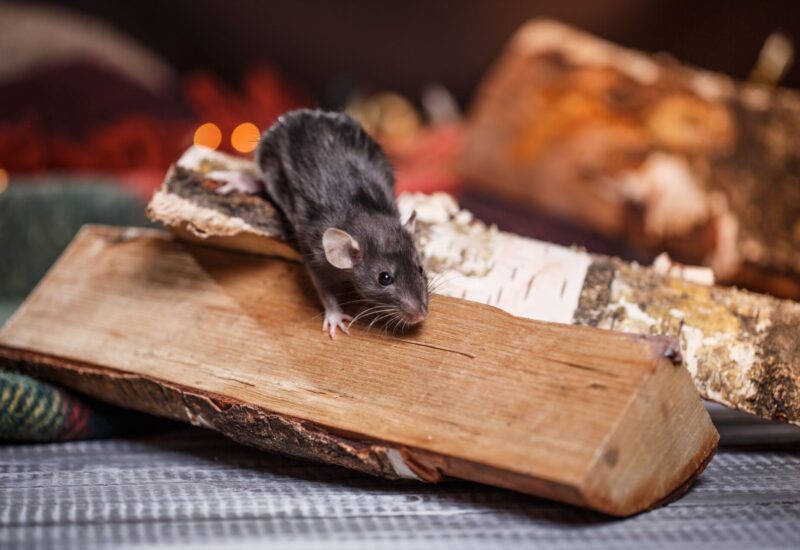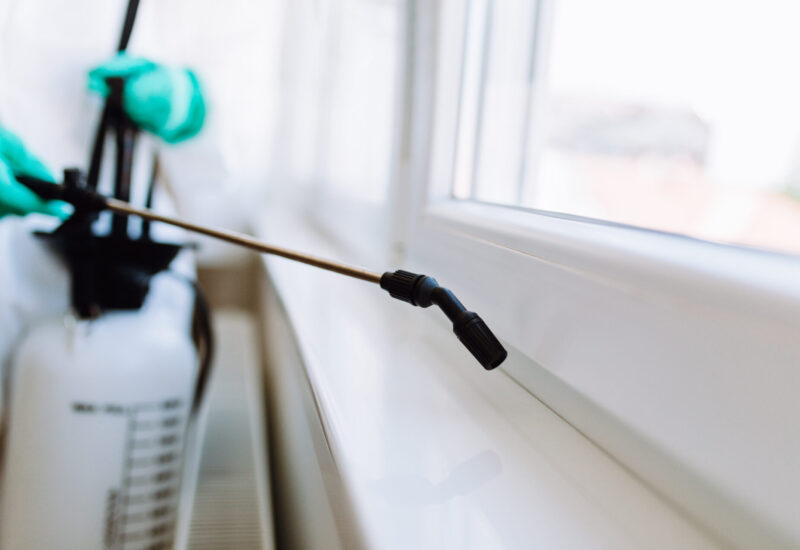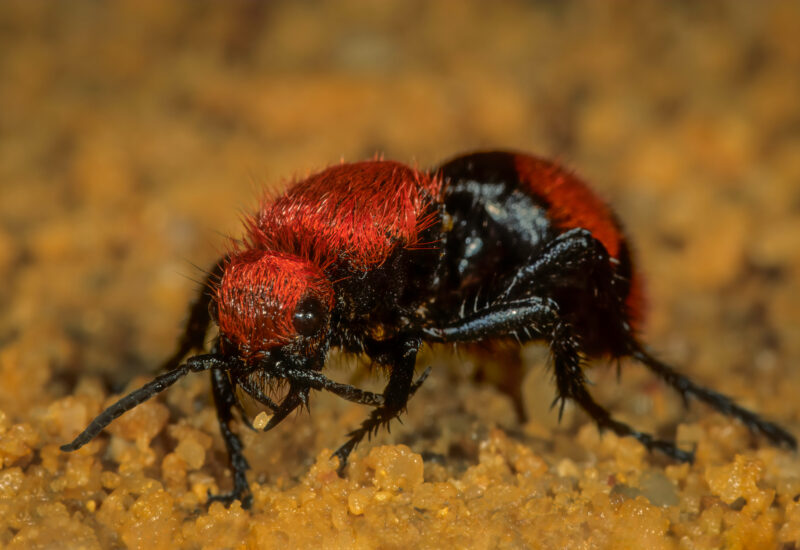4 of the Most Poisonous & Venomous Insects in New England
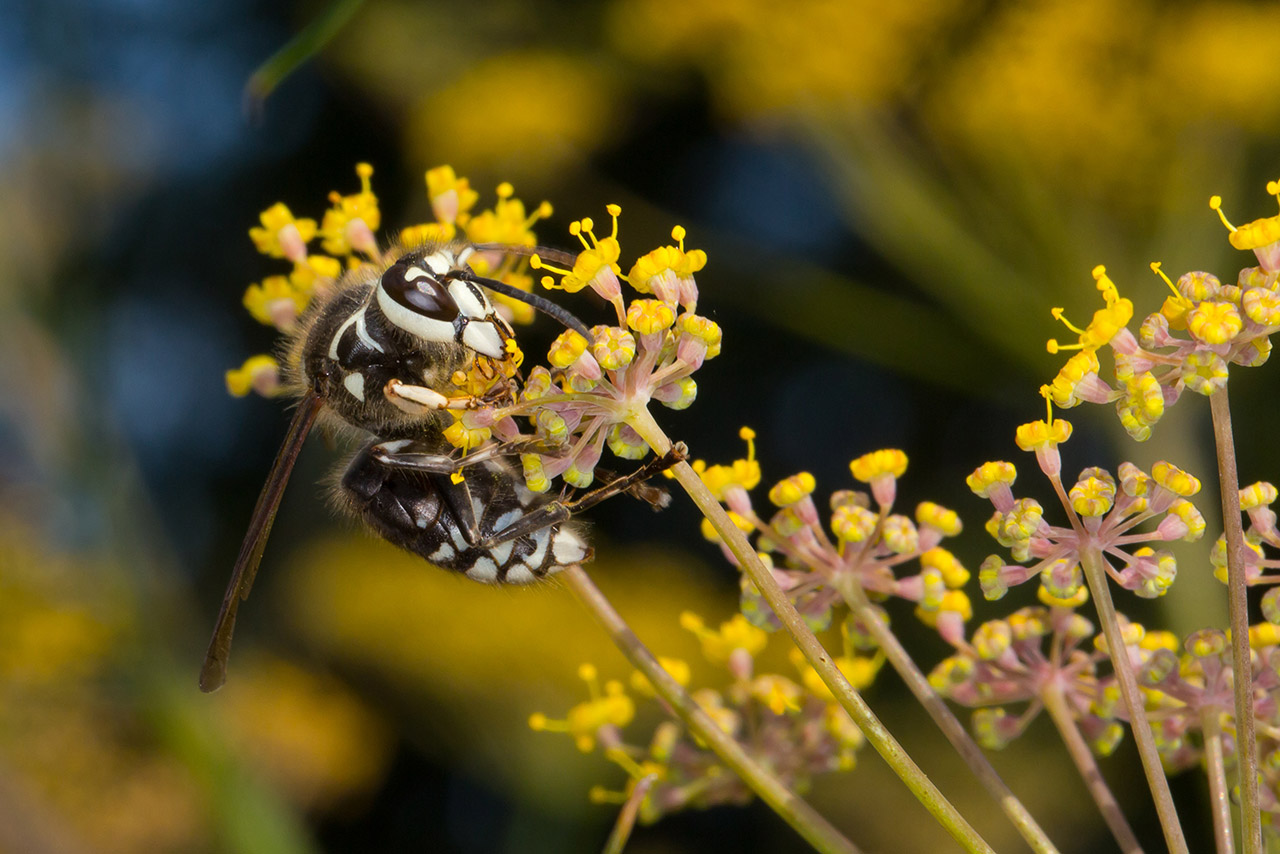
Learn about the 4 Most Dangerous Insects in New England & What to Do If You Encounter One
Residents and those visiting the Northeastern region of the United States must be cautious of venomous insects, four different species, specifically.
The insects on this list have venomous bites or stings that can cause acute pain and trigger allergic reactions.
It is important to know what to do if you encounter such dangerous insects as well as how to treat their venomous bites and stings to prevent health complications.
1. Yellowjacket Wasp
The yellowjacket wasp (Vespula squamosa) is an aggressive and venomous stinging insect.
A Northeast native, yellowjacket wasps are often seen during the summer season and sometimes as the season shifts to fall. Yellowjackets can typically be spotted from June to October.
This stinging pest is most active during the day.
When temperatures drop, yellowjacket workers die off. The workers cannot withstand temperatures below 45 degrees Fahrenheit, especially for more than a couple of days.
But, fertilized queen yellowjackets are able to hybernate over the winter.
They survive the cold by leaving the used nest and burrowing deep inside tree stumps, hollow logs, and other cavaties for warmth.
The bright yellow stripes against the predatory insect’s black body gives the yellowjacket wasp its name.
Often confused with bees and other types of stinging pests, yellowjackets can be distinguished by the lack of fuzz on its slender, shiny bodies. Yellowjackets are also smaller and slimmer than hornets.
Yellowjacket workers are about 1/2-inch in length, whereas a queen can be nearly an inch long.
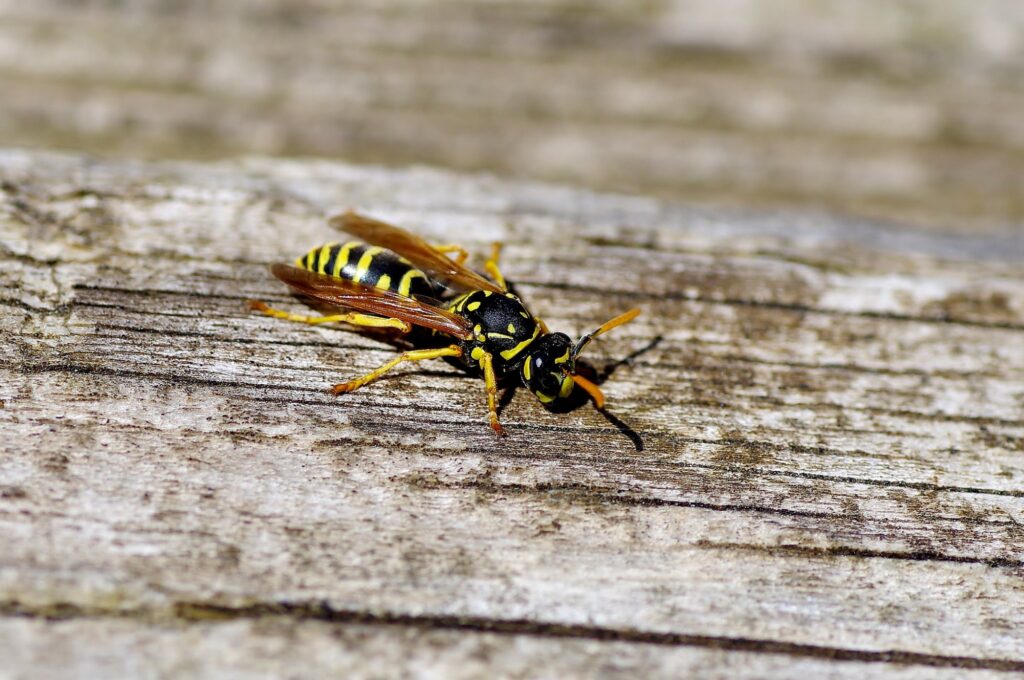
Yellowjackets live in colonies housed within multi-layered, papery nests. These nests are usually burrowed in wall voids, rock piles, rotted tree trunks, and other cavaties.
A single nest can host up to 5,000 yellowjackets.
Yellowjacket venom can incite immediate pain and life-threatening allergic reactions like anaphylaxis, in which the airway swells and closes.
The symptoms of a severe reaction include:
- Hives
- Coughing
- Tightness in chest
- Swollen tongue
- Difficulty breathing
- Stomach cramps
- Dizziness and nausea
- Fainting or coma
Yellowjackets, when threatened, attack in swarms and can sting multiple times.
If stung by a yellowjacket, immediately leave the site of occurrence as the venom releases a chemical signal alerting other yellowjackets that help is needed.
A yellowjacket sting appears as a small, white welt on the skin surrounded by redness. Unlike bees, yellowjackets rarely leave their stingers injected in the skin of their victims.
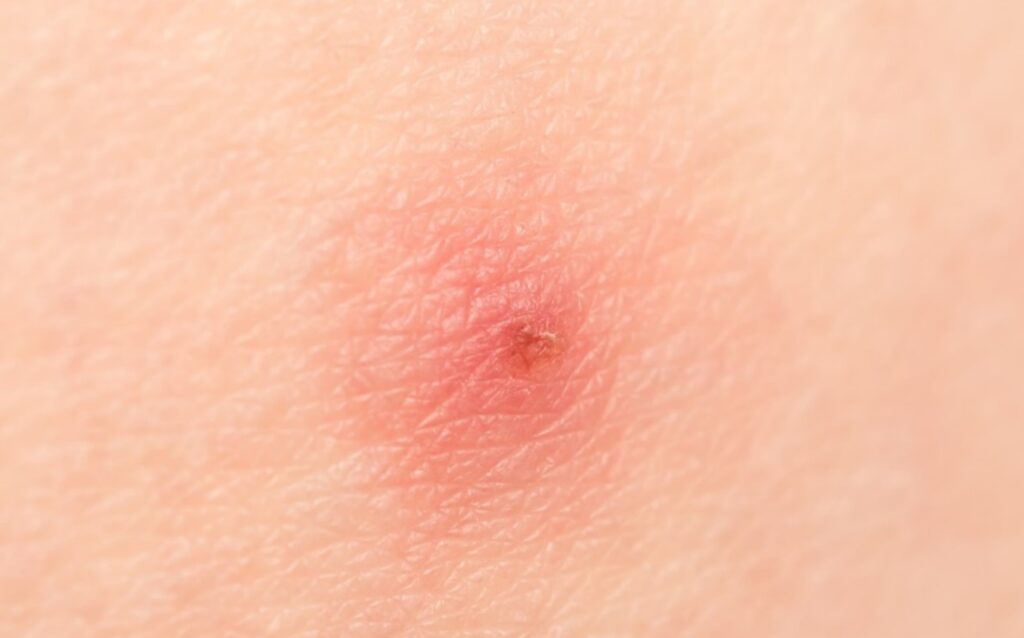
If there is a stinger, use a straight-edged object, like a credit card, to scrape it out. Attempts to squeeze the stinger out of the affected area can aggravate it.
Dizziness, wheezing, or rashes are all signs to quickly enlist a medic’s help. Victims that suffer over 10 stings should also immediately seek medical help.
While waiting for medical assistance, sanitize the sting site with soap and water. Do not use peroxide, ammonia, or other chemicals as it can further irritate the affected area.
Once the sting site is properly washed, spray it with an anesthetic spray that contains benzocaine. This helps to numb the pain and ease inflammation.
Doctors may prescribe antibiotics, antihistamines, or inject medication through an EpiPen® to treat allergic reactions or bacterial infections.
Yellowjackets are attracted to sugary residues, perfume, flowers, hairspray, and floral patterns.
To drive them away:
- Keep garbage cans covered or sealed.
- Use caulk to seal any visible cracks and voids in the walls, roofline, or foundation of the home.
- Plant wormwood, thyme, spearmint, and cucumbers.
- Spray essential oils like peppermint or eucalyptus in and around the residence.
- Hang sugar water wasp traps around sheds, picnic areas, and playgrounds.
Yellowjacket infestations are a serious matter that must be handled by a professional. A specialist will find the source of the infestation, the nest, and properly remove it.
2. Bald-Faced Hornet
Found throughout the U.S., the bald-faced hornet (Dolichovespula maculata) is very territorial. It is also not an actual hornet, but rather another type of yellowjacket.
Bald-faced hornets are distinguishable from yellowjackets by their slightly larger size in addition to the white and black stripes that streak cross their abdomens. Worker bald-faced hornets are 3/4-inch long.
Another name for the bald-faced hornet is the white-faced hornet.
The bald-faced hornet rears its ivory-colored head from spring to late summer.
Workers die off over the winter, while fertilized queens hybernate under rock piles, rotting wood, and other debris until the next year.
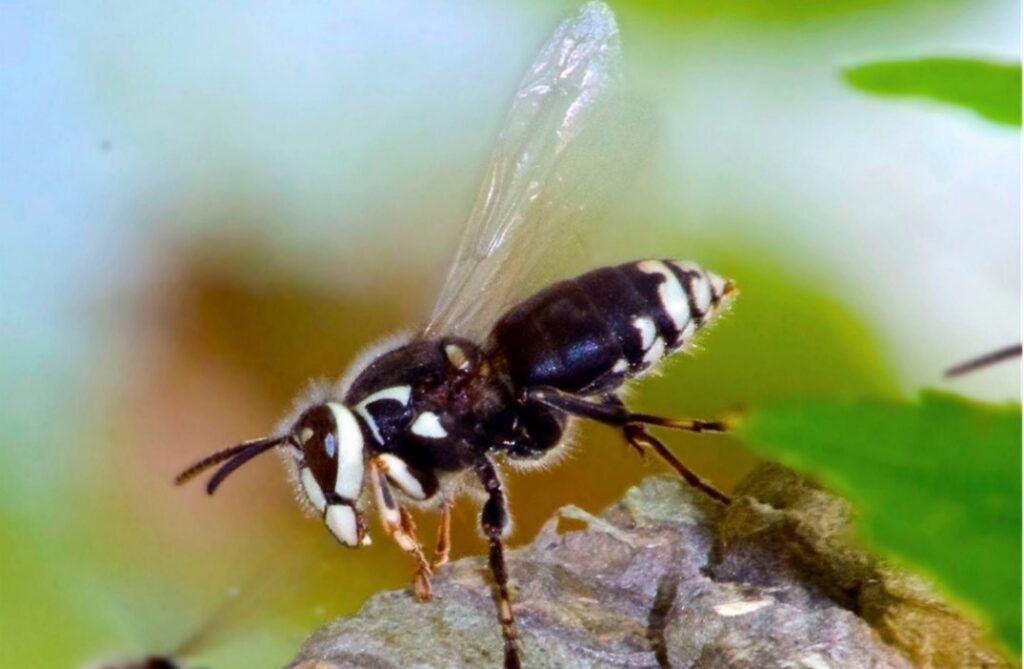
Bald-faced hornet nests are cone-shaped and typically built close to the ground. Occasionally, bald-faced hornets may construct nests in high areas like the eaves of a rooftop or the branches of a tree.
The nests can reach up to two-and-a-half feet in length.
One nest can contain over 400 workers. Bald-faced queens construct nests using their saliva and the cellulose of rotting wood.
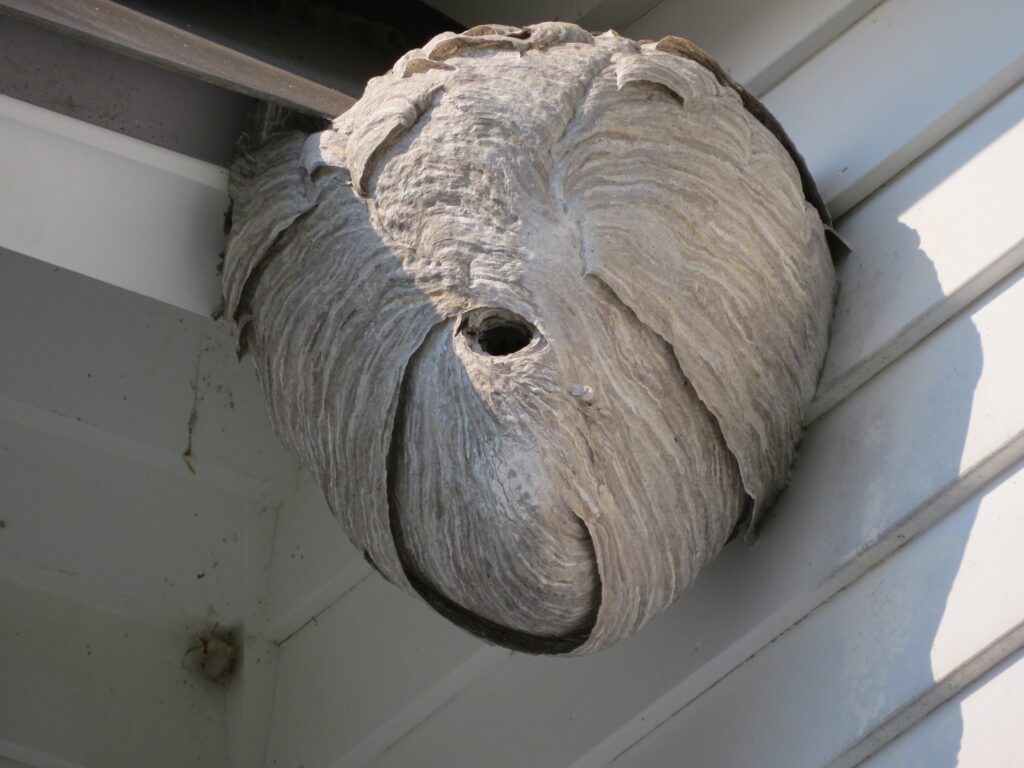
This type of wasp fiercely protects its nest. Trespassing is often met with repetitive attacks from multiple bald-faced hornets.
Female bald-faced hornets can also dispense poisonous spray, usually into the faces or eyes of their victims. The poison is ejected from their ovipositors, which are tube-like organs typically used to lay eggs.
This poisonous spray acts like pepper spray in that it stings the eyes and even causes temporary blindness. Both people and animals are susceptible to a bald-faced hornet’s spray. While it is painful, the spray is not fatal.
If nests are attached under the eaves of buildings, overhangs, or other areas frequented by people, a pest control specialist should be called as it is extremely unsafe to confront bald-faced hornets directly.
As with yellowjackets, multiple strikes from a bald-faced hornet’s venomous stinger can cause intense pain, itchiness, and swelling for approximately 24 hours.
Yellowjacket sting symptoms apply to those of bald-faced stings as well.
More than 10 bald-faced hornet stings will require immediate medical attention in case of severe reactions.
Treatment for bald-faced hornet stings is much the same as treatment for yellowjacket stings.
Bald-faced hornets are scavengers. Their diet consists mostly of other insects, including caterpillars, flies, and even yellowjackets. Bald-faced hornets are also attracted to meat and nectar.
To deter bald-faced hornets from making a home near your property:
- Plant citronella, thyme, or eucalyptus.
- Treat house eaves with natural repellent made from essential oils like clove, geranium, and lemongrass.
- Spray wasp repellent around the property.
- Set up bird feeders and baths to attract birds as they are natural predators of bald-faced hornets.
- Hang a fake hornet nest as the bald-faced hornet’s territorial nature will deter it from overstepping the boundaries of another wasp nest.
- Hang wasp traps around the property.
- Refer to yellowjacket repellent methods.
3. Brown Recluse Spider
Although rare, the brown recluse spider (Loxosceles) is occasionally seen in the Northeastern parts of the U.S., but it is not native to the region.
This species of spider is originally from the Southeast and Southwest — states such as Arkansas, Missouri, Kentucky, and Oklahoma see high populations of the spider, but can travel to other parts of the U.S. by hiding in freight trains and shipping containers.
Brown recluse spiders are most active between the months of April and October.
The brown recluse can be identified by its brown coloring and a dark brown violin-shaped marking on its upper body. It is this marking that gives the brown recluse its nickname, the fiddleback spider.
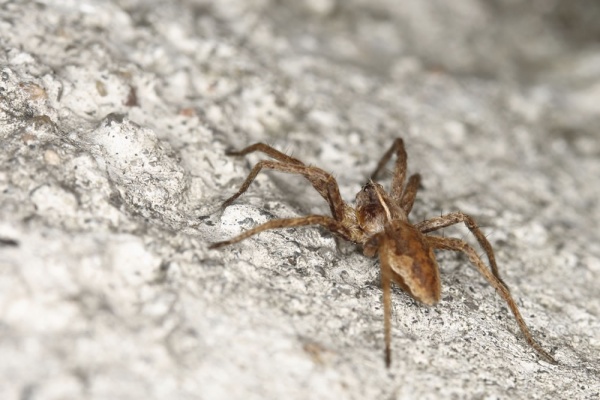
This type of spider enjoys dark, secluded areas with warm climates. Attics, shoes, bed corners, garages, sheds, and other crevices are all great hiding places for the brown recluse.
Brown recluse spider venom is poisonous. However, the spider only releases its poison in very small quantities.
In most instances, the brown recluse’s conservative nature keeps it from being lethal as it is not aggressive and only attacks if it feels threatened.
A brown recluse’s venom severely damages the blood vessels, causing tissue deterioration. In response, the body releases inflammatory cells and proteins, like cytokines, to defend against the venom.
The subsequent effects of these cells can include the destruction of red blood cells. It can also result in end-organ damage such as kidney dysfunction.
Bite marks from a brown recluse appear as reddish fang marks followed by blistering and lesion formation.
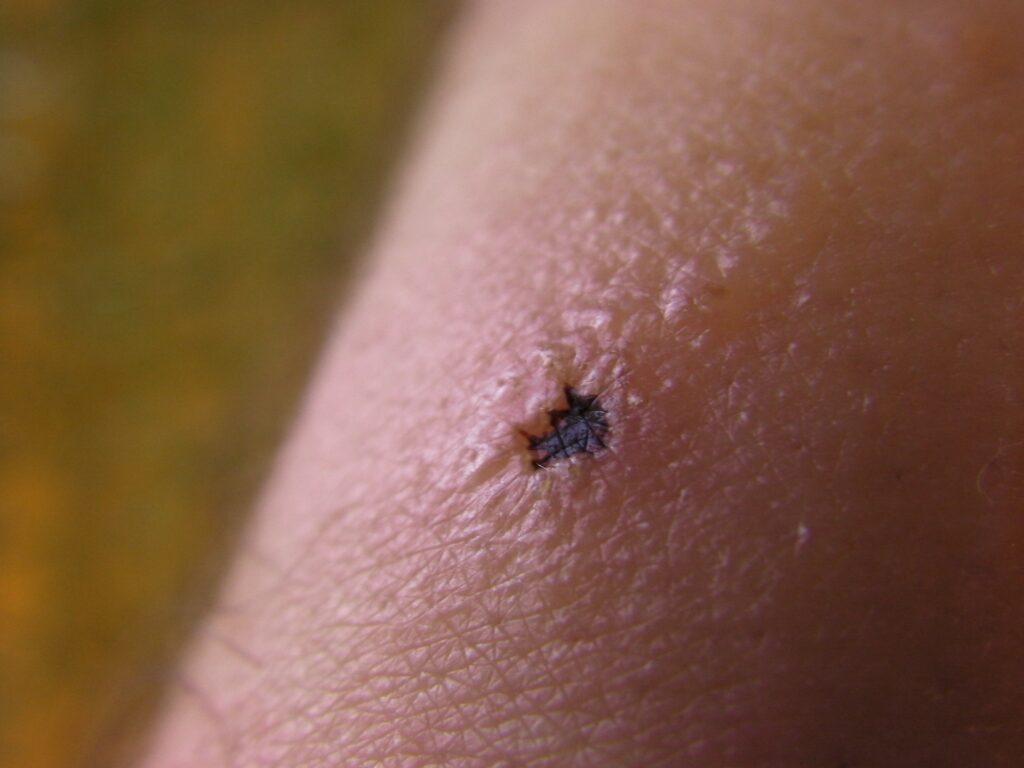
Typically, victims experience fever, nausea, vomiting, intense itchiness, and muscle pain.
Victims should seek medical support if bitten. If left untreated, within two weeks the white blisters can discolor to blue and ulcerate.
It can take three months for a brown recluse spider bite to completely heal. Daily follow-up with a physician ensures any complications are addressed and the victim stays on the path to a full recovery.
Severe instances may require skin graft surgery to treat serious skin damage, ulcers, or necrosis, but this is rare.
The brown recluse spider is often mistaken for the relatively harmless American house spider due to the similar coloring.
To differentiate a brown recluse bite from that of another spider, doctors use the mnemonic phrase NOT RECLUSE which stands for symptoms that are not characteristics of a brown recluse wound:
- Numerous bites: Brown recluse spiders only bite once.
- Occurrence: Brown recluses are nonaggressive pests unless provoked.
- Timing: The bite occurs when brown recluses are inactive (outside of April to October).
- Red center: Brown recluse bite marks are pale with redness surrounding the affected area.
- Elevated: Brown recluse bites are flat — not raised or elevated.
- Chronic: If victims experience chronic symptoms, it may not be from a brown recluse attack.
- Large: Brown recluse bites are small, no bigger than five inches in diameter.
- Ulcerates: Ulcers shouldn’t appear before two weeks from the time the victim was bitten.
- Swollen: Brown recluse bites do not swell, with the exception of the affected area being the face or feet.
- Exudative: Pus exudes from the wound, brown recluse spider bites blister or scab.
Brown recluses build their habitats in reclusive spaces, so infestations occur where clutter or crevices are prevalent. To avoid an infestation, block possible habitats by:
- Reducing clutter throughout the home and property.
- Keeping shoes off the floor or shake them out prior to wearing them.
- Placing glue traps along baseboards or other areas attractive to brown recluses.
Brown recluse fangs are tiny and cannot easily puncture through clothing. When cleaning cluttered areas, wear long-sleeved shirts, gloves, and pants.
Considering the intense effects of brown recluse venom, it is important not to go searching for them. If you suspect an infestation, enlist the help of a pest control expert.
4. Black Widow Spider
Although not native to the U.S. and rarely found in New England, black widow spiders (Latrodectus) have been reported in Connecticut, Massachusetts, Rhode Island, and southern parts of Vermont.
Black widow spiders most likely find their way into New England by way of shipping crates from southern states — like Florida, where they are more prevalent.
The black widow spider is easily identifiable by its black, bulbous body with red, hourglass-shaped markings on the underside of its abdomen.
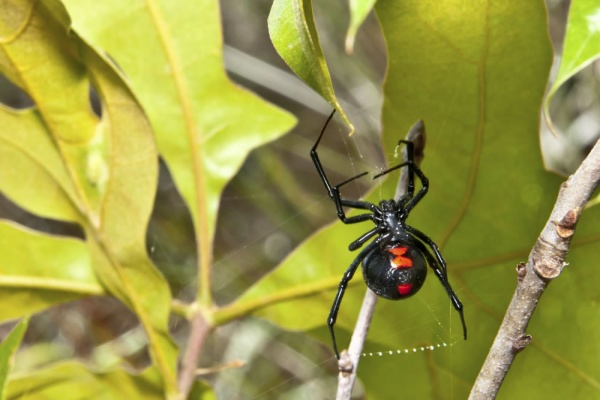
Black widow spiders enjoy areas under debris or wood piles, eaves, outdoor toilets, and other locations populated by flies — their primary prey.
Commonly found near ground-level holes or crevices in foundations, black widows will build their webs close to the ground, in dark or burrowed areas.
Black widow spiders are nocturnal, hiding in their nests during the day, reserving the evening hours to hunt. Only female black widow spiders are venomous, males are harmless.
A black widow spider’s bite appears on the skin as two puncture marks.
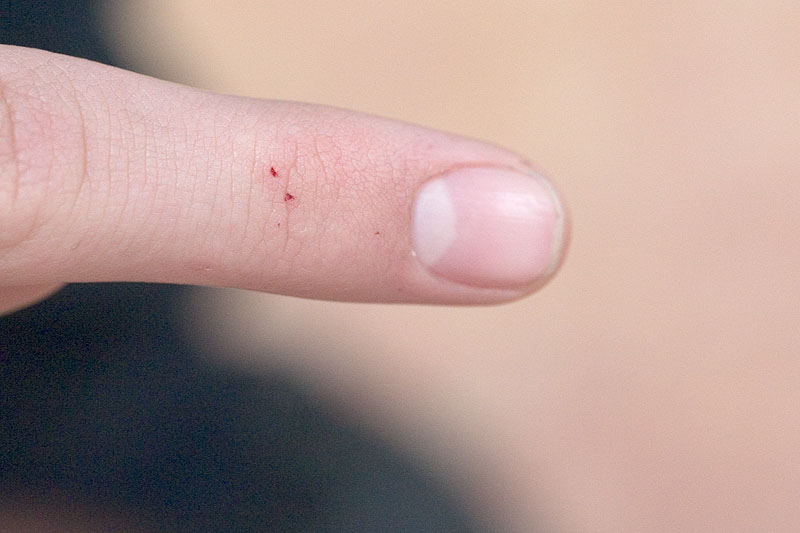
Their neurotoxic venom, once injected, travels through the bloodstream and causes nausea, vomiting, stomach and chest pain, muscle cramps, rashes, and increased blood pressure. Victims may also have difficulty breathing.
In extremely rare cases, black widow spider bites can be fatal.
The pain and discomfort from a black widow bite can last for several days but may not occur immediately after being bitten.
Nonetheless, victims must seek immediate medical attention after getting bit as symptoms can progressively worsen within hours.
As black widow spiders prefer dark, secluded areas where flies accumulate, keep your yard, garden, crawlspaces, attic, basement, and shed clutter-free.
Do not attempt to manhandle black widow spiders.
Most insecticides for black widow spiders are only available to licensed pest control experts.
Therefore, spider control services for black widow spiders is best left to professionals like those at Catseye Pest Control.
General Pre-Medic Treatment for Venomous Insect Bites & Stings
While waiting for medical attention, victims should try slowing the progress of a venomous attack by:
- Washing the affected area with soap and water.
- Applying a sanitized ice pack to the affected site.
- Elevating the affected body part and keeping it stationary.
- Applying antibiotics to the bite or sting to prevent infection.
- Using antihistamines or hydrocortisone cream to calm itchiness and reduce inflammation.
- Taking pain medication like Ibuprofen or Tylenol to abate acute discomfort.
- Keeping track of any worsening or new symptoms.
It is also crucial to not break any subsequent blisters as this may lead to a bacterial infection.
Get Expert Help for Dangerous Pest Infestations
Confronting the territory of a venomous or dangerous pest is not recommended for anyone other than a trained pest control technician.
Improper management of an infestation increases the chances of reoccurrence — and could lead to serious bodily harm.
A licensed pest control expert can safely remove the dangerous pest from the premises, helping to ensure the safety of those on the property. It will also leave you with peace of mind that the infestation was handled properly.
Catseye Pest Control offers Integrated Pest Management services (IPM) for all types of infestations.
IPM refers to a pest control approach that is both effective and environmentally friendly. It focuses on exterminating current infestations as well as preventing future ones by:
- Offering customizable treatments that address the severity and type of the infestation.
- Using organic, environmentally friendly pest control practices.
- Regularly monitoring the infested area with pest monitoring programs.
For extra protection from harmful pests like spiders, rodents, and stinging pests, Catseye offers a Platinum Year-Round Protection Program, helping to provide you with peace of mind.
With the Platinum Year-Round Protection Program, clients can expect quality treatments handled by our licensed professionals. Included in this protection plan are:
- Complete removal of pest habitats found in and around the property.
- Removal of pest excrement, exoskeletons, and other debris.
- Environmentally friendly spray treatments around the perimeters of the home.
- Installation of rodent monitoring devices throughout the afflicted area.
- Sealing of cracks, cavities, and other crevices found throughout the property.
This service also includes six visits throughout the year to ensure the property remains pest-free.
Contact our expert pest control technicians so that we may rid your property of any potentially dangerous pests.


